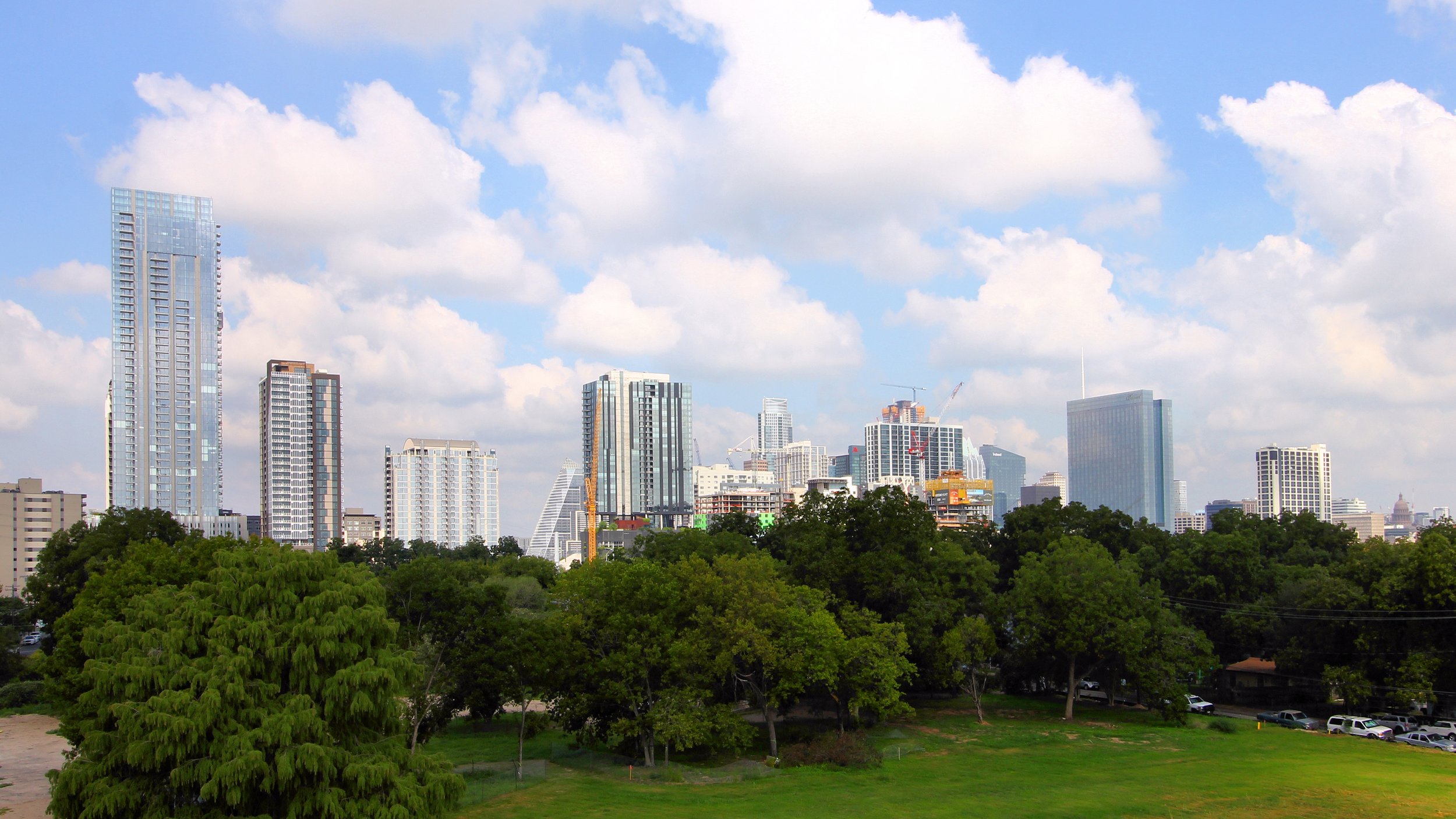Where Can Austin New Construction Investors Build in 2023?
New construction is booming throughout Austin in 2022, although land-use laws are uncertain. Learn more about the current state of the Austin market.
New construction has been booming in Austin. Compare pictures of the Austin skyline from a few years ago to one taken today, and you might think for a moment that you were looking at two different cities.
For builders, developers, and investors interested in Austin’s ground-up construction opportunities, it might seem like there is no room left to build in the city. That’s not necessarily the case. With a bit of research into what’s on with Austin’s zoning laws, you may see potential for a new construction project.
Read more: The Advantages of Capstone Capital Partners for Funding Austin New Construction Projects
Does Austin have any room for new construction?
Photo by Larry D. Moore from Wikimedia Commons [Creative Commons]
Land use and zoning laws have been contentious topics in Austin in recent years. That said, the city has plenty of room for new construction of both residential and commercial properties. Finding a good location for a particular project is often a matter of being in the right place at the right time, but familiarity with Austin’s fast-growing areas is a good place to start.
Builders, developers, and investors need not limit themselves to Austin itself. Surrounding towns like Round Rock, Cedar Park, and Georgetown, as well as unincorporated areas around Lake Travis, offer many opportunities for new construction.
The rate of new construction has increased for both residential and commercial properties. Some home builders claim that the city is on the verge of becoming a “builder’s market” instead of a buyer’s market, while others worry about ongoing supply chain shortages and other issues.
Where will zoning laws allow new construction in Austin?
The Lake Austin residence (LA) district is the most restrictive in the city. The limited industrial services (LI) district has the fewest restrictions. The city’s Guide to Zoning provides more detailed information on each type of district.
Austin’s current zoning laws date back to the 1980s. The city has been in the process of revising the city’s zoning, but objections from Austin residents have halted the process for the time being.
Austin new construction opportunities: commercial
In Austin, Texas, areas near Project Connect, Velocity, and East Village may present commercial real estate opportunities for new construction investors.
Some of the most common commercial zoning districts in Austin include general commercial (GR), commercial services (CS), and highway services (CH). These districts require large lots with minimum areas of 5,750 to 20,000 square feet and ample room for traffic flow.
Looking at some of Austin’s largest new commercial developments may offer a guide to where builders and investors may find opportunities for new construction:
Project Connect: The multi-year, multibillion-dollar project to expand Austin’s public transportation network, including light rail and expanded bus services
Velocity: A mixed-use development located at the intersection of US-71 and SH-130 in southeast Austin, close to the Tesla Gigafactory.
East Village: A 425-acre mixed-use development on Parmer Lane in northeast Austin
Austin new construction opportunities: residential
Two south Austin neighborhoods, Shady Hollow and Manchaca, often appear on lists of “up and coming” areas.
Like many cities in the U.S., residential zoning in Austin favors single-family homes of low to low-medium density, represented on zoning maps as SF-1 to SF-4. Minimum lot sizes for these zoning districts range from 10,000 to 3,600 square feet. Many city leaders, however, want to see more housing density. Changes to the city’s zoning laws could result in more multifamily (MF) zoning.
Outlying areas of the city might be the only place left to find undeveloped land for residential construction. Within the city, some neighborhoods are more amenable than others to new construction, especially when it might involve tearing down existing structures.
Understanding Austin zoning codes
Photo by Scott218 from Wikimedia Commons [Creative Commons]
The Austin Land Development Code contains the city’s zoning ordinances. The city has five major land use categories: residential, commercial, industrial, civic, and agricultural. Each category is divided into multiple districts and map codes. The zoning districts described here could be subject to changes in the future.
Commercial zoning districts in Austin include the following:
Central business district (CBD)
Downtown mixed use (DMU)
Neighborhood commercial (LR)
Community commercial (GR)
General commercial services (CS)
Commercial highway services (CH)
Lake commercial (L)
Neighborhood office (NO)
Limited office (LO)
General office (GO)
The zoning laws identify four industrial districts:
Industrial park (IP)
Major industry (MI)
Limited industrial services (LI)
Research and development (R&D)
Residential zoning districts mostly involve single-family and multifamily properties, with a few additional categories:
Single-family residences, ranging in size from a large lot (SF-1) to a townhouse or condominium (SF-6)
Multifamily residences, ranging from limited density (MF-1) to highest density (MF-6)
Lake Austin residence (LA)
Rural residence (RR)
Mobile home residence (MH)
Possible zoning law changes in Austin
Austin has not overhauled its zoning laws since 1984. It began the process of rewriting the code in 2012. The first draft of a proposed new code, called CodeNEXT, was released in early 2017. Battle lines quickly appeared. It might be impossible to describe the two sides without implicitly taking a side. Supporters of CodeNEXT generally want zoning laws that allow the city to address current issues like density and affordability. Opponents want to preserve the character of Austin neighborhoods and claim that the new code would lead to further gentrification.
The City Council voted to toss out the first draft of CodeNEXT in 2018. It adopted a revised version in 2019 by a 7-4 vote. A group of Austin residents filed suit shortly afterward, arguing that the city violated state law by failing to give notice to homeowners who would be affected by the proposed zoning changes. Since this is a complete rewrite of the zoning laws, the city argued, it would require notice to nearly every property owner in the city, which would not be practical.
A judge sided with the plaintiffs in 2020, finding that the city violated twoprovisions of the Texas Local Government Code when it voted to approve the code. A court of appeals affirmed that ruling in March 2022, effectively ending CodeNEXT’s prospects. It remains unclear what will happen to the city’s zoning laws now.
Get new construction projects funded by local experts
New construction in Austin requires careful planning and close attention to not only the market, but also to possible changes in the city’s land-use laws. Capstone Capital Partners lives here, works here, and invests here!
We’ll evaluate your project and help you determine if it is likely to be a success. We know the nuances and quirks of the Austin market. Answer a few quick questions now to get started on your pre-approval.



